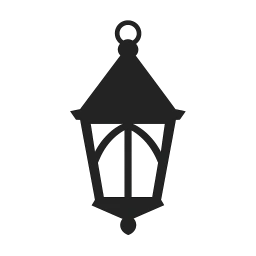In the whispering corridors of the subconscious, a shadow waits. It is not a monster, though it may wear terrifying faces. It is not your enemy, though it has haunted your choices. It is not evil, though it holds every part of you that you’ve been taught to hide. This is your shadow—the disowned self, the emotional residue of shame, pain, anger, and fear. And shadow work is the sacred act of unmasking it.
To embark on the path of shadow work is to stand at the threshold of your truest self. You must walk through the forest of discomfort, bearing the lantern of self-awareness, guided by a single intention: to reclaim what was once denied.

The Nature of the Shadow
The term “shadow” was first popularized by Swiss psychoanalyst Carl Jung. According to Jung, the shadow represents the unconscious aspects of our personality—the parts we reject, suppress, or ignore because they don’t align with our desired self-image or society’s standards. These parts don’t disappear; they fester in the dark, influencing our behavior in ways we often can’t recognize.
Have you ever lashed out in anger and immediately regretted it? Or projected jealousy onto a friend, only to realize it stemmed from your own feelings of inadequacy? These moments of irrationality or emotional intensity are often the shadow’s cry to be acknowledged.
But the shadow isn’t just a dumping ground for pain. It also holds repressed gifts—creative potential, intuition, sensuality, power, and primal instincts that were deemed “too much” or “inappropriate.” When we silence these parts of ourselves, we dilute our authenticity. Shadow work, then, is not merely about healing wounds. It’s about remembering who you were before the world told you who to be.

Why We Fear the Shadow
Unmasking the shadow requires a confrontation with the uncomfortable. It asks us to admit our flaws without defense, to recognize where we’ve hurt others, and to take responsibility for our emotional reactions. This kind of honesty is not taught in schools or glorified in society. In fact, we’re often rewarded for ignoring our shadow—by pretending, by performing, by numbing.
The ego, which is our conscious self-image, works tirelessly to maintain a polished persona. But the more we deny our shadow, the more it rules us from the dark. This is how unconscious patterns are born—repeating toxic relationships, sabotaging our goals, and attracting chaos. You are not cursed. You are simply divided.
To fear the shadow is to fear the truth. But once you begin the work, you realize something profound: the shadow doesn’t want to destroy you. It wants to be integrated. It wants to come home.

The Ritual of Recognition
Shadow work is not a one-time ritual or a weekend workshop—it is a lifelong process. But every journey begins with recognition. Here are a few signs your shadow is speaking:
- You’re emotionally triggered by people who reflect traits you secretly dislike in yourself.
- You struggle with low self-worth, impostor syndrome, or chronic shame.
- You judge others harshly or feel judged often.
- You find yourself repeating cycles that leave you feeling powerless or stuck.
Start by noticing. When a strong emotional reaction arises, pause and ask, What part of me is being touched right now? Instead of blaming the external situation, turn inward. Journal about your feelings. Meditate on the sensation in your body. Ask yourself, when have I felt this way before?
Often, these emotions trace back to childhood experiences—moments when we learned it wasn’t safe to cry, to speak up, to be angry, or to be different. And so we buried those parts, along with the feelings they carried. Now they return, like ghosts, seeking resolution.

Shadow Work Techniques
There is no single path into the underworld of the psyche. But here are some powerful methods to explore:
Journaling Your Darkness
Set aside time each day to write about your emotional experiences, especially the ones you’d rather forget. Use prompts like
- What part of myself do I hide from others?
- When did I last feel ashamed? Why?
- What traits do I judge in others?
- When do I feel most inauthentic?
Let your answers be raw. The page is a mirror. You don’t need to be polite to your journal.

Mirror Work
Stand in front of a mirror. Look deeply into your own eyes. Speak aloud the things you’re afraid to admit.
- I am angry.
- I am jealous.
- I feel unworthy.
Then follow each with :And I still love you. This practice isn’t about reinforcing negativity—it’s about embracing honesty. Only through compassion can the shadow soften.

Dream Analysis
Our subconscious speaks in symbols. Pay attention to your dreams. Keep a dream journal. Notice recurring themes, characters, or situations. Ask: What does this represent within me? The monster may be your rage. The lost child may be your vulnerability. Interpret with intuition, not logic.

Inner Child Work
Much of the shadow is formed in childhood. Revisit your younger self. Visualize them. Speak to them. Write letters. Let them cry, rage, laugh, and express themselves without judgment. Re-parent them with love and protection. You are both the wounded child and the healing guardian.

Guided Meditation and Ritual
For those drawn to spiritual practice, incorporate ritual into your shadow work. Light a black candle for protection and grounding. Surround yourself with obsidian or onyx. Create a safe space. Use guided meditations designed to explore the subconscious. Journal afterward. Offer gratitude to your shadow for what it revealed.
The Gifts in the Dark
As you unmask your inner truths, you may encounter painful memories, confront hard truths, and shed identities that no longer serve you. But what rises in their place is nothing short of magic.
You’ll become more emotionally intelligent, less reactive, more compassionate with yourself and others. You’ll recognize manipulation when you see it—especially your own. You’ll break ancestral cycles and become the healing force your lineage has waited for.
You’ll become real. Whole. Radiant with integrity.
Shadow work doesn’t just change your mind. It changes your vibration. When you stop hiding from yourself, your life transforms—relationships improve, clarity sharpens, and a deep inner peace takes root. You no longer perform for love. You are love. Whole, raw, and unapologetic.
Caution and Care
Shadow work is powerful—but it’s also delicate. It’s not advised for those in active crisis without professional support. If your trauma is intense, seek a trauma-informed therapist or spiritual guide. Integration takes time. Be gentle. Go slow.
This is sacred work, not self-punishment. Don’t shame yourself for the shadows you uncover. Every soul carries darkness. What matters is how you relate to it.
You are not broken. You are becoming.
Conclusion: The Alchemy of Self
In the ancient art of alchemy, base metals are transmuted into gold. In shadow work, your pain is transmuted into wisdom. Your rage becomes a sword of boundaries. Your sorrow becomes a song of truth. Your darkness becomes your depth.
Unmasking your inner truths is not for the faint of heart. But for those brave enough to turn inward, a revelation awaits: The shadow was never your enemy—it was your exiled self, waiting to be seen.
So take up your lantern, dear seeker. Walk into the dark. The path of shadow work is the path of reclamation. And what you find there will be the most honest, beautiful, and powerful version of you yet.



Leave a Reply